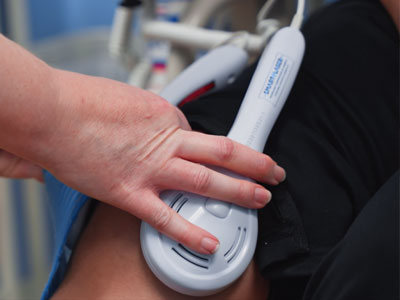Neck pain?
Our necks work very hard … supporting our heads, turning, twisting, and bending many, many times each hour. No wonder we end up with pain! The vertebrae in our neck and spine are separated by discs. These discs are like “cushions” to absorb the movements and shock to our spines. So why all the pain? Why the pain the shoots up into the head, causing headaches and discomfort? What’s the real cause of the “pain in the neck?”
You may be experiencing pain, restriction, numbness, tingling in arms, aching, and more in your neck. Taking medicine alone may mask the symptoms, but it will not deal with the underlying cause of your problem.
A symptom is something that shows you the existence of something else. Symptoms result from conditions.
Have you been told you have a bulging disc, herniated disc, spinal stenosis, degenerative disc disease, arthritis in your neck? Has anyone told you that you need surgery or painful injections? These may be your conditions and situations, but they are still not your underlying problem.
What is the problem in my neck? My headaches are stealing my life!
The bones of the spine are called vertebrae. The spinal discs are the cushions between the bones in your spine. At each disc level two spinal nerve roots exit from the spinal cord.
The spinal disc is what allows your spine to be flexible and have motion. The spinal discs absorb shock from movement and spread the vertebrae apart to keep pressure off the spinal nerve roots.
There is no blood supply directly into the spinal discs. The only way the spinal disc receives water, oxygen, and nutrients is by the mechanism within each spinal disc called imbibition, the pumping mechanism of the spinal disc for its health.
As you go about your day, walking and moving, the spinal discs are constantly pumping water, oxygen, and nutrients in and out. In addition, the discs are pumping the waste products out into circulation, keeping the discs healthy.
But what happens if this pump mechanism fails?
As with any tissue, it begins to degenerate, becomes weak, and eventually dies. This causes the walls of the spinal disc to be degraded and micro tears may possibly develop. These are called annular rents or tears.The weakness in the spinal disc of the neck is the cause of the spinal disc bulging and eventual herniation. The herniation can cause even more severe conditions and symptoms, such as dehydration, which may lead to arthritis, spinal stenosis, facet arthropathy, sciatica, numbness, and tingling in the arms.
When this happens over time, a domino effect also takes place. The result is that the spinal disc above and below will begin to weaken and possibly fail also.
When the spinal disc dehydrates, this leads to degenerative disc disease. The condition of your spinal discs is best seen on the MRI/CT with a radiologist’s report.
What is the usual approach for treatment of these conditions?
Surgery may be needed in some cases; however, the majority of cases can be handled without surgery. Here is the typical treatment often used.- Bed rest
- Over the counter medications, such as: ibuprofen, Advil, etc.
- Physical therapy
- Epidural injections, when the symptoms persist, which according to Mayo Clinic, have their own negative side effects.
- Chiropractic adjustments
Invasive surgery, if all else fails
Thankfully, there is a better way – non-surgical spinal decompression therapy
So what should I do?
We recommend VAX-D non-surgical spinal decompression therapy and cold laser therapy to help restore the spinal discs to healthier function, Our goal is to try to avoid surgery altogether!!
Now that you understand that the underlying solution for your condition is the health of your spinal discs, the number one question you should ask any provider of medical care treating your neck or back is …
Will this treatment make my spinal discs healthier?
It's time to have a different focus – focus on the spinal disc health and not on the symptoms. It’s time to focus on repairing the failed pump mechanism.
TWO THINGS THAT WILL KEEP YOU IN PAIN…
- Treating the Symptoms… You might try exercise, stretching, traditional chiropractic care, physical therapy, over-the- counter pain medications, an inversion table, Pilates, yoga, etc. These treatments may seem to help for a few days or weeks or even months, but the pain always seems to come back again.
- Insurance-dictated Healthcare. You, as a patient, may pay large premiums for your health insurance and understandably want to do things that are paid for by that health insurance. Making decisions totally based on what insurance will pay may cost you much more in the long run. Medical insurance will, however, pay for a portion of this therapy.
These are traps, because drugs and injections just mask the pain. Surgery on the spine, although paid by most insurances, has a very low success rate, relieving pressure temporarily, often setting the stage for a second or more surgeries.



